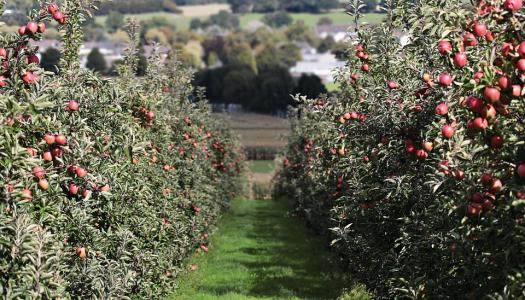Which metals are lurking in Kelowna and West Kelowna garden soils?

The use of compost, fertilizers, herbicides and other soil amendments along with anthropogenic inputs such as paints, automobile exhaust and tire wear, metal fabrication and recycling industries can potentially introduce metals into urban soils including gardens.
Gardeners can be exposed to these metal contaminants through incidentally ingesting soils adhering to hands and produce or consuming produce which accumulate the metals. I’ve therefore been studying the distribution and bioavailability of potentially toxic metals in urban soils in Canada over the past few years in collaboration with our BSc (Healing City Soils) and MSc students.
Metals we’ve been studying include arsenic, cadmium, chromium, copper, lead, nickel and zinc. We recently added Kelowna and West Kelowna to the list of urban centres studied. These two municipalities in the Okanagan are well known for their fruit orchards, wineries along with home and community gardens. Soil samples were collected from 28 homes and 17 community gardens and analyzed for total metals and metal bioavailability. Interviews were also conducted with homeowners to ascertain gardening practices and past land use.
In line with data from most of the urban centres we’ve studied so far, metal concentrations in the Kelowna and West Kelowna samples were generally below the applicable Canadian Council of Ministers soil quality guidelines. Overall the risk associated with ingestion of potentially toxic metals such as arsenic, cadmium and lead in the garden soils in these two communities was deemed low based on metal concentrations and their bioavailability. Gardens with raised beds generally had slightly lower metal concentrations compared to in ground ones and the use of various soil amendments did not appear to influence metal distribution. Past land use activities such as orchards, parking lot, wasteland, and flood plain appeared to have the most impact on metal concentrations.
We intended to present the results at this year’s Society of Environmental Toxicology and Chemistry (SETAC) annual conference in Dublin, Ireland and include a selfie or two with something Irish for this blog. Due to COVID-19, the conference was convened on May 3 – 7 as a virtual event dubbed “SETAC SciCon”. Around 2000 participants from 60 countries participated in this virtual conference with a networking lounge, live keynote presentations, moderated platform, poster and Q&A sessions. The Kelowna and West Kelowna data was presented at SciCon as a poster via my laptop and Zoom, alas no Irish selfies.